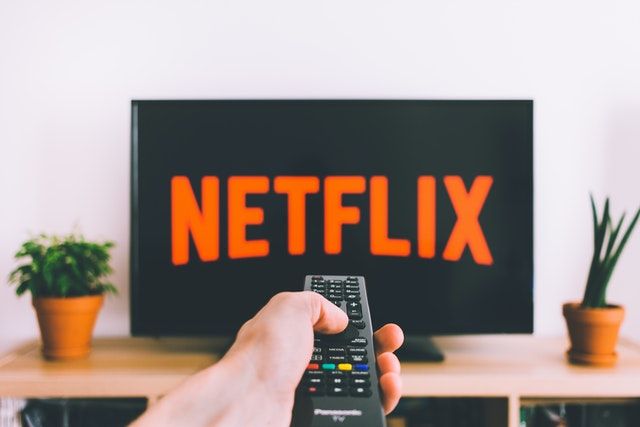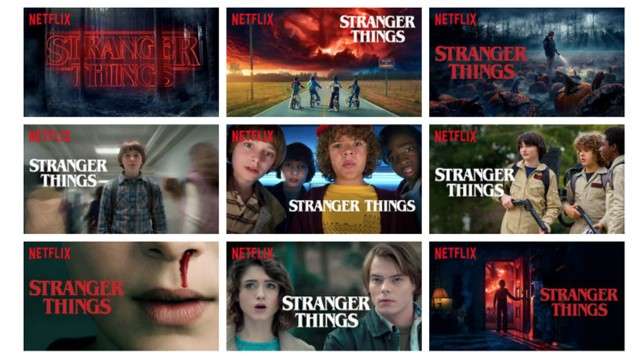Intelligence on Netflix: How Netflix is Using AI and Bigdata
Intelligence on Netflix illustrates how computers adapt to people's preferences and offer them what they appreciate. Here are the top 8 ways showing how does Netflix use big data, machine learning, and artificial intelligence to attract more subscribers with extraordinary content production.

Started as a DVD Rental Company and Entered to Million Dollar Market
A startup, Netflix launched in the 1990s offering customers with DVD rental services initially is now the world's renowned media service provider.
Randolph and Hastings, in the early days, worked on a strategy to understand how users interact with rental DVDs and gathered maximum insights from it. With time, it also becomes easier to collect and analyze data. Even when two decades are passed, Netflix improved itself based on insights extracted from data. The company is struggling to make it the favorite entertainment source by offering exactly what its users want.
The use of artificial intelligence by Netflix represents how computers become adapted to users' choices and show them what they love to enjoy. They gathered the generated data while using the Netflix platform to analyze identical profiles. The system ignores broad categories and considers content’s complex strands. For instance, Netflix would recommend a “Netflix AI movie” if you started watching one of the similar shows. Netflix now provides customized content per user and offers it in multiple languages, varying genres, and categories.
Netflix’s Global Growth Market
The pandemic played a significant role in the growth of this global OTT (over-the-top) marketplace; as people stayed home and kept engaged, they started spending their time on entertainment platforms. Netflix got popular globally because its extraordinary recommending services are led by artificial intelligence and machine learning. Netflix and AI outperform in offering tailored suggestions for a specific user.
It currently has over 209 million paying subscribers, and from it, over 73.9 million subscribers are from the US and Canada. Moreover, 52% of adults living in the United States use Netflix and have subscribed to it.
Key Statistics of Intelligence on Netflix
- In 2020, Netflix generated $24.9 billion revenue.
- North America is Netflix’s largest market, helping it earn $11.45 billion in revenues from the total.
- Netflix had 220 subscribers in 190 countries.
How Netflix Uses Machine Learning?
By using Netflix machine learning strategy, the company’s experts monitor platform activity in real-time. It is not as easy as it seems to engage and retain this higher number of audiences. They used an ML-based recommendation algorithm to curate the pages of every individual user with their desired content. Netflix’s algorithm notices users' implicit and explicit data, including their watching and rating history. Aish Fenton, the software engineer at Netflix, confirmed that:
“80% of what people played on Netflix came from the recommendation algorithm.”
Recommendation engines work like data-filtering tools by using intelligence-based strategies. These engines help media streamers, including Spotify, Netflix, Amazon Prime, and others, boost revenues and CTR (click-through rate).
How Netflix Uses Big Data and Analytics?
Netflix uses data analytics models to uncover customer likings and buying behavior and then use these details to recommend TV shows and movies to their subscribers. Netflix tracks the date a time when a user started watching a Netflix intelligence series or a play on a device. It also tracks when he paused the content and had he restarted it or changed his mind, how much time he spends on watching a series and did he go till the end. Unexpectedly, Netflix also knows what is searched and how many times the search is repeated, including the snapshots of scenes a user watched more than once, which means showed interest.
All this information is accessible with data analytics that helps Netflix stand out among competitive platforms in offering the most relevant content based on user's preferences. It is known as Netflix’s Recommendation Algorithm that involves suggesting demanding content per subscriber to keep them engaged in the web of movies they love to stay. How does Netflix use big data is successfully based on its data extraction strategy and information usage from the data. Hence, it is the major reason that makes it a million-dollar market.
Netflix also asks its users to share their feedback on its outperformance. The team behind it warmly welcomes suggestions from viewers and updates their system up to their demands as its services are based on a customer-centric approach. They improve the system to engage the audience by customizing the viewer's homepage. There are 33 million versions of Netflix, according to the Director of Global Communication, Joris Evers.
How is AI Involved in Boosting Netflix's Subscriptions?
What clients demand has almost changed in the past two decades, and it was so complex to find what they want; one may conclude they want a media platform that revolves around them wholly. Netflix learned from the behavior of its users to scale up their content delivery by transferring autonomy to the users completely.
The content on Netflix is available for everyone and accessible on any device, including TV, iPad, smartphones, and laptops, because of the wide availability. Moreover, Netflix also tracks the device on which the content is played and offer varying recommendations based on the device to engage subscriber more effectively. Netflix records every action, including when the show was watched at which part of the day and what was watched before and after it. Every user profile has a behavioral base that allows the algorithm to detect similarities and recommend the next show based on the data.
Here are the top 8 ways Netflix machine learning, AI and Big Data attract more subscribers with extraordinary content production.
1. Recommendation System
What information system does Netflix use? Two major types best describe recommending systems:
Content Based Recommendation: In this system, the background information related to the product and the customer information is considered. Similarly, Netflix suggests the content found on the user's past views. For instance, if a user watches "fantasy" films, the platform will present the same genre and cast content to match the binge-watcher demands better.
Collaborative Filtration: This recommendation system is independent of past knowledge and suggests content based on similar user profiles. It completely focuses on the assumption that "what the user prefers to watch in the past must be favorable to them in the future."
Recommendation engines performance based on Netflix data mining strategy can be explained as:
1. Data collection and its utilization correctly made Netflix stand out from the competitors. It is collected in two major ways.
Explicit Data: When users share their reviews or rating, likes/dislikes, and comments regarding a show.
Implicit Data: It represents their behavioral data like clicks, web search history, specific time, device, staying period, and location tracking.
2. Data Storage strategy differs based on its types and sub-forms.
3. Data Analysis is done according to the requirements in real-time or batches.
4. Data Filtration might be on content (data from one content is taken by the algorithm and replicated among others), collaborative (data analysis based on users' activity), or hybrid data filtering model (combination of above two). However, it is the first step in applying ML algorithms to the content. Netflix uses a hybrid model recommendation system.
2. Netflix Show Intelligence: The Location of a Movie
Netflix is not the only content streaming platform, but it also produces its content regarding movies and shows. Their unique content production boosts their profitability and revenues. Over the years, this strategy has become one of the major reasons behind its sustainability. Statista reported that in 2019, Netflix produced original content comprised of 2769 hours, more than 80% released in the previous year. Further, it launched 129 original content titles in the third quarter of 2021, and the number was 125 in the same period of last year.
Coming to point, every movie shooting requires the selection of location, and Netflix gets the advantage of machine learning in determining the most suitable place. The ML algorithms check the shooting requirement, schedules and costs of cast and crew, weather conditions, and other related factors. Machine learning quickly finds the right shooting place, joining with other best possibilities.
3. Netflix Changed the Rating Way
Most of the recommending systems set their rating system from one to five, allowing viewers to share their watching experience. But Netflix doesn’t move with the flow; it decided to use thumbs up and thumbs down, an expression that shows if a user liked or disliked the content. The percentage of user expectation is also extracted from these impressions. Now the team gets a clear idea of content mostly appreciated by the audience, getting rid of the confusing rating way. Another reason for Netflix’s rapid growth among its competitors is using data for improving recommendation systems. The platform uses global data instead of the region based to suggest the best fit content to its quality viewers.
4. AI Movie Netflix: Recommendations Are Customized
Thanks to artificial intelligence, Netflix recommends content differently based on choices even when the same account is logged in different places. The algorithm collects data and improves its relevant suggesting ability with time. As time passes on Netflix, its algorithm better understands what you want to see based on your searching and staying period on specific content. The Netflix recommendation engine costs about $1 million per year to share the best watching experience.
5. Personalized Netflix Thumbnails

Thumbnail is the first impact of the whole movie; these must be so attractive to compel the audience to click on them. Based on the thumbnail, users click on it to get further details, and Netflix AI specializes in auto-generating user-specific thumbnails in creating tailored results for all users. Amazingly, a machine learning algorithm tracks the user’s clicking habits and determines the look of the next thumbnail appearing to them. Thumbnail selection might be based on showing the genre or actor on it, so people who love them will for sure click on it. It means Netflix artificial intelligence generate multiple thumbnails for the same show. The graphics on the thumbnail influence traffic on a specific series significantly.
However, Netflix personalization approach might bring some risk as a poster may be shown to a subscriber repeatedly who has no interest in watching it. But the chances of losing an audience are reduced because of 200 million subscribers. Netflix reported that:
“The cost of user exploration is amortized across our large member base, with each member implicitly helping provide feedback on artwork for a small portion of the catalog.”
Netflix intelligence focuses on
Optimized Streaming Quality: Machine learning is involved here that forecasts the audience behavior and detects the rise and fall in the number of viewers who watch a show at a specific time. When a show is getting high popularity, they store regional servers closer to the local audience. It helps avoid blocking in streaming and providing content without buffering to maximize their users' satisfaction.
Content Quality: Netflix data analytics case study also observes audio, subtitles, and video to check the content quality. It fails or passes content based on the data fed in it. However, the scrutiny process doesn't end here; for further inspection, it is analyzed by the human team to pass the highest quality content to the users.
According to Nick Nelson, the global manager on Netflix for creative services:
“The company conducted research in 2014 and found artwork was not only the biggest influencer in a user’s decision of what to watch but also added up to over 82 percent of their focus while browsing Netflix.”
The paper was published with the title "The Netflix Recommender System: Algorithms, Business Value, and Innovation” shares the features used by Netflix to attract more audiences with top-notch streaming services.
- Customized video ranker (determine genre rows on Netflix)
- Video-video similarity (Netflix show intelligence shows similar titles to the audience to check their interest)
- Trending now
- Continue watching
- Top-N video Ranker (finds the best content that matches with the user’s demand)
- Page generation
- Statistical and machine learning techniques
6. Netflix Artificial Intelligence Helps Discovering the Next Popular Show Series
Netflix paid about hundred million analyzing the data before finalizing the House of Cards’ 26 episodes. Netflix Big Data have the potential to find the viewers’ liking for Kevin Spacy and David Fincher. Netflix used this data to bring an excellent cast that makes the audience unstoppable towards the series. Furthermore, machine learning was used in generating the show’s poster.
7. Netflix Digital Marketing Strategy to Increase Users’ Interest
Netflix conducts custom marketing using Big Data and analytics to promote different versions of the same show. If the user’s activity revolves around men, the machine learning algorithm shows you content based on men and vice versa. In this way, Netflix saves its time and money for running campaigns and advertisements because people are already aware of the famous actors (at that time) and would be interested in watching their Netflix intelligence series.
8. Extraordinary Digital Marketing Campaigns Run by Intelligence Netflix
Netflix runs massive marketing campaigns social media posts and, allowing its members to connect with it globally from anywhere, anytime, on any screen.
Its marketing approach can be summarized as:
- Multichannel Marketing for Brand Awareness: Netflix does not depend wholly on a single platform but gets the advantage of multichannel to engage a maximum audience. For instance, its “Stranger Things” series got popular on Snapchat and Twitter. At Snapchat, Netflix pays it to share augmented reality experiences, while at Twitter, the company generates interest via featuring fictional characters. Moreover, it doesn't ignore other social media giants like Facebook and Instagram to promote its content. Netflix interacts with its flowers too on these social media platforms, listening to their feedback and comments closely to make their platform more adaptive and comfortable for its users.
- Ad-Free Content Delivery: The major drawback of running ads while the user is watching content distracts them and loses their intention leading to changing their mind. Netflix takes advantage of sharing content without running ads and attracting more users to its platform. It is also a major reason behind Netflix’s success. They ask for low monthly charges and, in return, allow you to watch as much as you can without even a single advertisement.
- Email Marketing: Most consider email marketing a dead and tedious way to attract an audience, but Netflix proved their ideology wrong by outperforming excellent email marketing and earned users. After it, the platform shows them tailored solutions to engage them for a long to learn their demands and converts them into their subscribers.
In the Nutshell
Netflix is one of the most loved global streamers, and it demands appreciation for consistently satisfying its rising customer. If it is about using machine learning, AI and Big Data in the absolute way to outperform, Netflix is the best example. The company uses a customer-centric approach followed by artificial intelligence to prioritize business demands. AI, ML, and Big Data have the potential to bring extraordinary things to the market when implemented rightly. Netflix AI regarding users and subscriptions deals with satisfaction by personalizing feed and improving users' experience.


